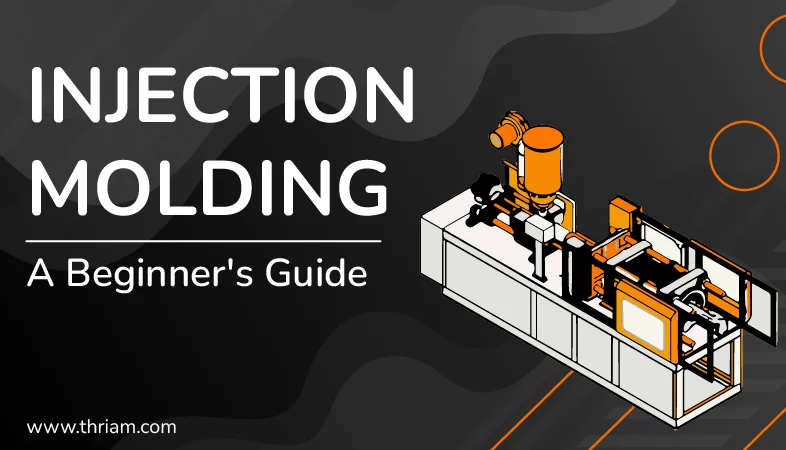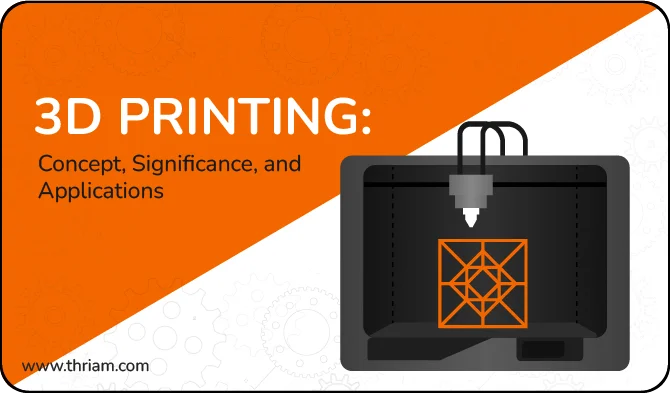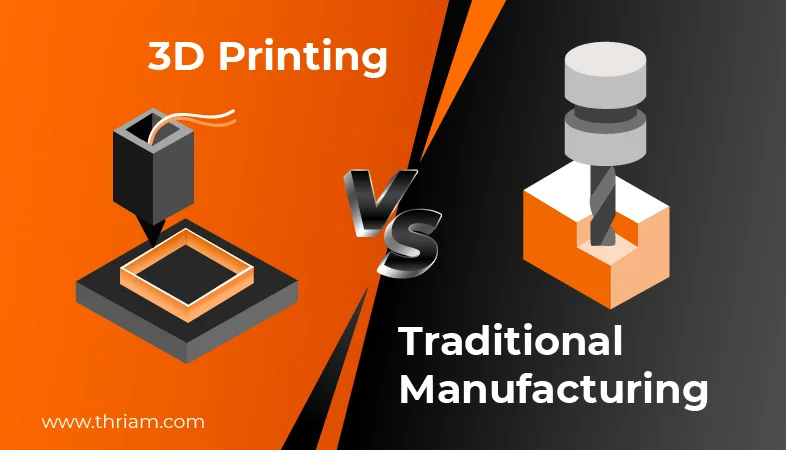Difference between Injection moulding and additive manufacturing
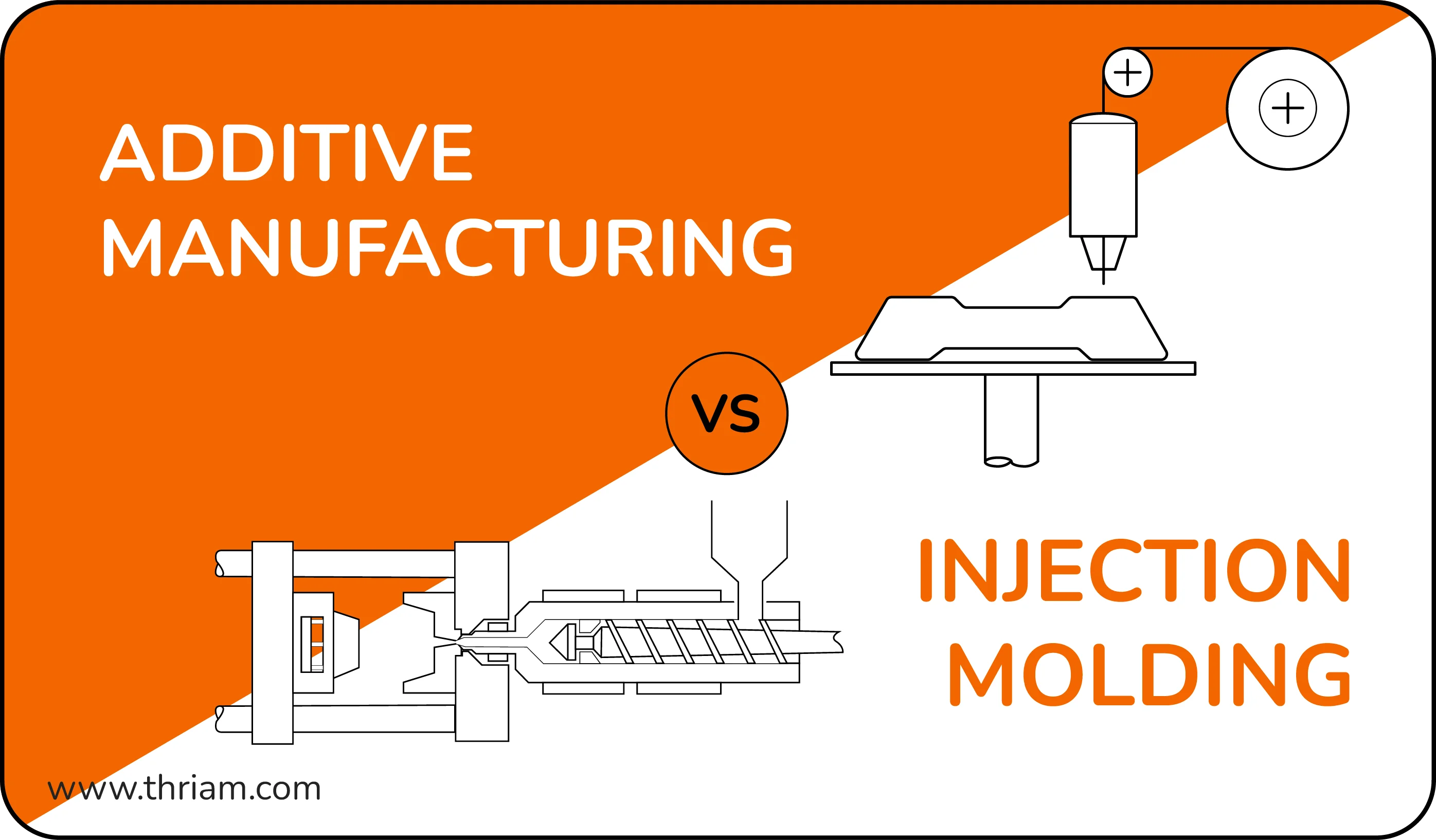
Injection Moulding
Advantages, Disadvantages, Types, Applications, and Case Study
Injection moulding is a manufacturing process that involves melting plastic pellets and injecting them into a mould to create a finished product. This process is widely used in various industries due to its efficiency and accuracy. In this blog, we will discuss the history, process, types, advantages, and disadvantages of injection moulding. Additionally, we will explore the applications of this process and provide a real-life case study to highlight its benefits and limitations.
What is Injection Moulding?
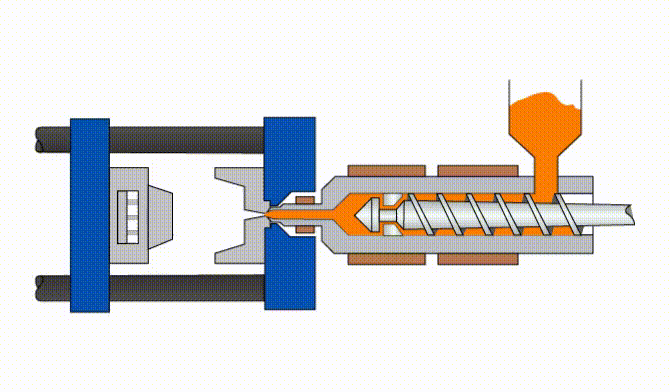
Injection moulding was first developed in the 1870s, but it wasn't until the 1940s that it became a popular manufacturing technique. The process involves melting plastic pellets in a hopper and injecting them into a mould under high pressure. Once the plastic cools and solidifies, the mould is opened, and the finished product is ejected.
Thermoplastics are commonly used in injection moulding due to their ability to be melted and re-solidified multiple times. Some of the most common thermoplastics used in injection moulding include polypropylene, polyethylene, polystyrene, and PVC.
Advantages and Disadvantages of Injection Moulding
Injection moulding has several advantages, including high production rates, low labour costs, and accuracy. This process can produce large quantities of identical parts quickly and efficiently, reducing the need for manual labour. Additionally, injection moulding allows for high precision and intricate designs.
However, injection moulding also has its disadvantages. The initial cost of creating the mould can be high, making it less feasible for small-scale production. Additionally, the design flexibility is limited due to the constraints of the mould, and the environmental impact of plastic waste is a concern.
Types of Injection Moulding
There are several types of injection moulding, each with its unique process and benefits. Conventional injection moulding is the most common type and involves injecting plastic into a mould to create a finished product. Structural foam moulding uses a foaming agent to create a lightweight and durable product. Gas-assisted injection moulding uses nitrogen gas to create hollow parts, reducing material usage. Micro injection moulding is used to create small and intricate parts, and co-injection moulding involves injecting two different materials into the mould to create a finished product with unique properties.
Applications of Injection Moulding
Injection moulding is used in a broad range of industries, including automotive, medical, and packaging. Some of the most common products made using injection moulding include bottle caps, syringes, and car parts. The versatility and efficiency of injection moulding make it a popular choice for manufacturing a wide range of products.
Case Study on Injection Moulding
A real-life case study on injection moulding involves a company that needed to create a complex part for a medical device. The part required high precision and intricate details, making injection moulding the ideal process. The company worked with a moulding specialist to create a custom mould and successfully produced the part with high accuracy and consistency.
This case study highlights the advantages of injection moulding, such as precision and efficiency, but also the limitations, such as the high initial cost of creating a custom mould.
Additive Manufacturing
Advantages, Disadvantages, Applications, Types, and Case Study
Additive manufacturing, also known as 3D printing, is a process of creating three-dimensional objects by adding layers of material on top of each other. This technology has gained popularity in recent years due to its ability to create complex shapes and reduce material waste. In this blog post, we will discuss the history, advantages, disadvantages, applications, types, and case study of additive manufacturing.
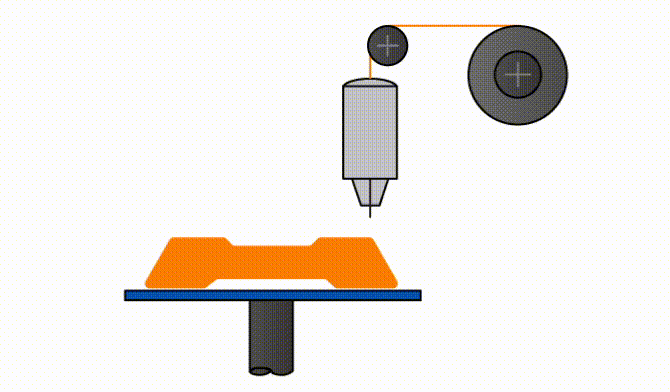
Advantages and Disadvantages of Additive Manufacturing
Additive manufacturing has several advantages, including increased design freedom, reduction in material waste, faster time-to-market, and cost-effectiveness. This process allows for the creation of complex shapes that would be difficult or impossible to make using traditional manufacturing methods. Additionally, additive manufacturing reduces material waste by only using the necessary amount of material to create the object, resulting in cost savings.
However, additive manufacturing also has some disadvantages, such as limitations in material selection, surface finish, and mechanical properties. The materials used in additive manufacturing are limited compared to traditional manufacturing methods, and the surface finish may not be as smooth. Additionally, the mechanical properties of additive manufactured parts may not be as strong as those produced using traditional methods.
Applications of Additive Manufacturing
Additive manufacturing has a wide range of applications in various industries, including:
- Aerospace and Defense
- Medical and Dental
- Automotive
- Consumer Products
- Education and Research
- Other Industries
Additive manufacturing is used in the aerospace and defense industry to create lightweight and complex parts for aircraft and spacecraft. This technology allows for the creation of parts that are stronger, lighter, and more cost-effective than traditional manufacturing methods.
Additive manufacturing is used in the medical and dental industry to create custom prosthetics, implants, and surgical tools. This technology allows for the creation of complex and personalized parts that fit the patient's unique needs.
Additive manufacturing is used in the automotive industry to create prototypes, tooling, and spare parts. This technology allows for faster time-to-market and cost savings compared to traditional manufacturing methods.
Additive manufacturing is used in the consumer products industry to create customized and personalized products, such as jewelry, phone cases, and toys.
Additive manufacturing is used in education and research to create prototypes and models for testing and experimentation.
Additive manufacturing is also used in other industries, such as architecture, fashion, and art.
Types of Additive Manufacturing
There are several types of additive manufacturing, including:
- Material Extrusion
- Vat Polymerization
- Powder Bed Fusion
- Material Jetting
- Binder Jetting
- Sheet Lamination
- Directed Energy Deposition
Material extrusion, also known as Fused Deposition Modeling (FDM), involves melting and extruding thermoplastic materials through a nozzle to create a three-dimensional object.
Vat polymerization involves curing liquid resin using a light source, such as a laser or projector, to create a three-dimensional object.
Powder bed fusion involves melting and fusing powder materials using a laser or electron beam to create a three-dimensional object.
Material jetting involves jetting liquid photopolymers onto a build platform and curing them using a light source to create a three-dimensional object.
Binder jetting involves jetting a liquid binder onto a powder bed, binding the powder together to create a three-dimensional object.
Sheet lamination involves cutting and bonding sheets of material together to create a three-dimensional object.
Directed energy deposition involves melting and fusing powder or wire materials using a laser or electron beam to create a three-dimensional object.
Case Study on Additive Manufacturing
One relevant and impactful case study on additive manufacturing is the production of a titanium bracket for the Airbus A350 aircraft. The traditional method of producing this bracket involved 140 separate parts, which were assembled and welded together. Using additive manufacturing, the bracket was produced as a single piece, reducing weight by 30% and saving production time and cost.
Advantages and Disadvantages of Injection Moulding
Advantages of Injection Moulding:
- High production output and efficiency:
- Consistent and accurate product dimensions:
- Versatile material options:
- Reduced labor costs and minimal waste:
- Improved surface finish and product quality:
- Increased design flexibility and complexity:
- Enhanced strength and durability of products:
Injection moulding is a highly efficient process that can produce a large number of products in a short amount of time. This makes it an ideal process for mass production of products.
The use of computer-controlled machinery and automated processes in injection moulding ensures that the dimensions of the final product are consistent and accurate. This results in products that are of high quality and meet the required specifications.
Injection moulding can be used with a wide range of materials, including plastic, metal, and ceramic. This allows for greater flexibility in product design and material selection.
Injection moulding is an automated process that requires minimal labor, resulting in reduced labor costs. Additionally, the process generates minimal waste, as excess material can be recycled and reused.
Injection moulding produces products with a smooth surface finish and high-quality surface detail. This results in products that are aesthetically pleasing and have a high level of quality.
Injection moulding allows for greater design flexibility and complexity compared to other manufacturing processes. This is because the process can produce products with intricate shapes and details that would be difficult to achieve using other methods.
Injection moulding produces products that are strong and durable, making them suitable for use in a wide range of applications.
Disadvantages of Injection Moulding:
- High initial cost of equipment and machinery:
- Limited production size:
- Lengthy setup time for creating the mould:
- Complexity in design and engineering of the mould:
- Environmental concerns related to waste and disposal of materials:
- Potential defects or flaws in the final product:
- Difficulty in modifying or adjusting the mould:
Injection moulding requires specialized equipment and machinery, which can be expensive to purchase and maintain. This can be a barrier to entry for small businesses or startups.
The size of the mould used in injection moulding limits the size of the final product. This can be a disadvantage for larger products or products that require a larger production size.
The process of creating the mould used in injection moulding can be time-consuming and costly. This can result in longer lead times and higher costs for production.
The design and engineering of the mould used in injection moulding can be complex and require specialized expertise. This can result in higher costs and longer lead times for production.
Injection moulding generates waste materials that can be difficult to dispose of. This can be a concern for companies that prioritize sustainability and environmental responsibility.
Injection moulding can result in defects or flaws in the final product, such as warping or surface imperfections. This can result in lower-quality products that are not suitable for use.
Once the mould used in injection moulding is created, it can be difficult and costly to modify or adjust. This can limit the flexibility of the production process and result in higher costs for changes or modifications.
Advantages and Disadvantages of Additive Manufacturing
Advantages of Additive Manufacturing:
- Cost-effectiveness:
- Design flexibility:
- Faster production times:
- Reduced waste:
- Customization:
- Increased innovation:
- Improved accuracy and precision:
Additive manufacturing can be more cost-effective than traditional manufacturing methods, as it can reduce material waste and lower production costs. This is especially true for small-scale production runs, where the cost of tooling and setup can be prohibitive.
Additive manufacturing allows for greater design flexibility and complexity compared to other manufacturing processes. This is because the process can produce products with intricate shapes and details that would be difficult to achieve using other methods.
Additive manufacturing can produce parts and products faster than traditional manufacturing methods. This is because the process does not require tooling or setup time, and products can be produced on-demand.
Additive manufacturing produces less waste than traditional manufacturing methods, as it only uses the necessary amount of material to create the object. This results in cost savings and a more sustainable manufacturing process.
Additive manufacturing allows for greater customization of products, as each product can be designed and produced to meet the unique needs of the customer. This is especially useful in industries such as healthcare, where customized prosthetics and implants are needed.
Additive manufacturing has the potential to increase innovation, as it allows for the creation of new products and designs that were not possible before. This can lead to new business opportunities and growth for companies.
Additive manufacturing produces products with high accuracy and precision, as the process is computer-controlled and automated. This results in products that are of high quality and meet the required specifications.
Disadvantages of Additive Manufacturing:
- Limited material options:
- Higher equipment costs:
- Slower production for large quantities:
- Surface finish issues:
- Difficulty with scaling:
- Dependence on software and technology:
- Regulatory challenges:
The materials used in additive manufacturing are limited compared to traditional manufacturing methods. This can limit the range of products that can be produced using this process.
The equipment and machinery used in additive manufacturing can be expensive to purchase and maintain. This can be a barrier to entry for small businesses or startups.
Additive manufacturing can be slower for large-scale production runs, as each product must be produced individually. This makes it less suitable for mass production of products.
The surface finish of products produced using additive manufacturing may not be as smooth as those produced using traditional manufacturing methods. This can be a disadvantage in industries where a smooth surface finish is required, such as automotive and aerospace.
Additive manufacturing can be difficult to scale up for large-scale production runs. This is because the process is more suited for small-scale production runs and may not be as efficient for larger quantities.
Additive manufacturing is dependent on software and technology, which can be a disadvantage if there are technical issues or software malfunctions. This can result in production delays and increased costs.
Additive manufacturing is a relatively new technology, and there may be regulatory challenges related to the safety and quality of products produced using this process. This can be a disadvantage for companies operating in highly regulated industries.
Injection Moulding vs Additive Manufacturing: Comparisons
Injection moulding and additive manufacturing are two of the most commonly used manufacturing processes in the industry. Injection molding is a process of creating parts by injecting molten material into a mold, while additive manufacturing involves building parts layer-by-layer using a 3D printer. Although both processes are used to create parts, they differ in several aspects:
- Materials used
- Production speed
- Cost efficiency
- Quality control
- Tolerance levels
- Design flexibility
- Post-processing requirements
- Environmental impact
- Volume capacity
- Equipment and tooling requirements
Injection molding can use a wide range of materials, including thermoplastics, thermosets, and elastomers. Additive manufacturing, on the other hand, is limited to materials that can be melted and extruded through a 3D printer, such as plastics, metals, and ceramics.
Injection molding is a faster process compared to additive manufacturing, as it can produce parts in large quantities in a short amount of time. Additive manufacturing is a slower process, as it builds parts layer-by-layer, which can take several hours or even days depending on the complexity of the part.
Injection molding is a cost-effective process for large-scale production runs, as the cost per unit decreases as the volume increases. Additive manufacturing is more expensive for large-scale production runs, as the cost per unit remains constant regardless of the volume.
Injection molding provides better quality control compared to additive manufacturing, as the process is highly automated and the parts are produced with high accuracy and precision. Additive manufacturing can produce parts with lower accuracy and precision, which may require additional post-processing to achieve the desired quality.
Injection molding can produce parts with tighter tolerances compared to additive manufacturing, as the parts are produced using a mold with high precision. Additive manufacturing can produce parts with lower tolerances, which may require additional post-processing to achieve the desired level of accuracy.
Additive manufacturing provides greater design flexibility compared to injection molding, as it can produce parts with complex geometries and internal structures that are difficult to achieve using traditional manufacturing methods. Injection molding is limited to parts with simple geometries and may require additional tooling to produce parts with complex shapes.
Injection molding requires minimal post-processing, as the parts are produced with high accuracy and precision. Additive manufacturing may require additional post-processing, such as sanding, polishing, or coating, to achieve the desired surface finish and quality.
Injection molding produces more waste compared to additive manufacturing, as the excess material from the mold must be removed and disposed of. Additive manufacturing produces less waste, as only the necessary amount of material is used to produce the part.
Injection molding is suitable for large-scale production runs, as it can produce parts in large quantities in a short amount of time. Additive manufacturing is more suitable for small-scale production runs, as the process is slower and less cost-effective for large volumes.
Injection molding requires specialized equipment, such as a mold and an injection molding machine. Additive manufacturing requires a 3D printer and a digital file of the part to be produced. The equipment and tooling requirements for injection molding are more expensive compared to additive manufacturing.
Conclusion
Injection moulding is a widely used manufacturing process due to its efficiency, accuracy, and versatility. While it has its advantages and disadvantages, the benefits of this process make it a popular choice for producing a wide range of products. As technology continues to advance, it's likely that injection moulding will remain a crucial part of the manufacturing industry.
Additive manufacturing has several advantages, including cost-effectiveness, design flexibility, faster production times, reduced waste, customization, increased innovation, and improved accuracy and precision. However, there are also disadvantages, such as limited materials, higher equipment costs, slower production for large quantities, surface finish issues, difficulty with scaling, dependence on software and technology, and regulatory challenges. As technology continues to advance, additive manufacturing will likely become even more accessible and widely used in various industries.
In summary, injection molding and additive manufacturing differ in several aspects, including the materials used, production speed, cost efficiency, quality control, tolerance levels, design flexibility, post-processing requirements, environmental impact, volume capacity, and equipment and tooling requirements. Companies must consider these differences when choosing a manufacturing process that best suits their needs.
